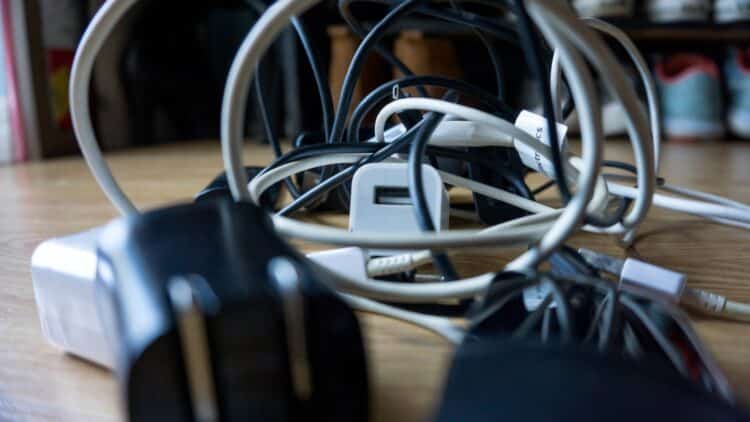Modern technology has enriched our home lives in ways we could never have imagined. A hundred years ago, no one would have believed that you could go to the movies, listen to all the concerts you wanted, or consult encyclopedias without even leaving your house. However, every device, from video game consoles to cell phone chargers, requires a cable. Little by little, electronic devices accumulate, and with them their cables and chargers.
This ends up resulting in a disorganized tangle that accumulates behind televisions and under desks. No one likes spaghetti cables, but they have an easy solution if you put in a little effort and visit your Dollar Tree store.
Adhesive hooks
Although there are hundreds of devices for hiding cables available on Amazon, from wicker boxes to lacquered screens that hide all those tangled black cables from view, there is a much cheaper and simpler solution. You may even already have them at home: we are talking about self-adhesive plastic hooks. These hooks, which are sold at Dollar Tree and any other discount store, are the most economical and versatile alternative for untangling all those cables. A pack of four costs only $1.50. Although they are small, they are sturdy and will hold even the heaviest HDMI cables quite well.
Before you start, untangle all the cables and plan the most discreet route for them. You may prefer to stick them to the baseboard, follow the edge of a door frame, or use them on the back of a piece of furniture. Plan and measure the route carefully so you don’t have to peel off and reattach the hooks.
Once you have figured out the cable route, clean the surface where you are going to place the hook to ensure maximum adhesion. Make sure it is dry and remove the protective paper to expose the adhesive. Then press the hook firmly into place. Finally, slide your cables into the hook. If the route is long or you have many cables, repeat the process and place several hooks in a straight line parallel to each other.
This frugal method not only keeps cables stuck to the wall, but also eliminates the risk of tripping over them on the floor, or—if you have cats—having a furry little animal chew on them and leave you without an HDMI cable.
Plus, unlike zip ties, the hook allows you to adjust the cables in seconds without cutting anything. They offer a much more durable and stronger hold than Siva tape (which, let’s be honest, tends to lose its stickiness over time). If you need to remove them from a wall with old paint or adhesive paper, do so slowly and carefully so as not to tear off the paint or damage the wall.
Other ways to organize cables
Although hooks are probably the cheapest and most practical way to guide cables, there are other possibilities for organizing them and hiding bulky plugs. One way to group cables together and adjust them occasionally is to use reusable Velcro tape.
These strips are soft and wrap around the cables, sticking to themselves. However, you can change them at any time, add cables if you need to, and cut and buy more zip ties.
Although if you are looking for a more permanent and aesthetic solution—we can blame Pinterest and Instagram—there are cable sleeves or covers. These are fabric or plastic tubes (often with a zipper included) that turn a dozen individual cables into a single clean visual trunk. They are perfect for cables that descend from a desk or wall-mounted TV.
As we mentioned before, most of the visual chaos ends up concentrated in the power strip full of plugs, transformers, and currents. This is where the cable management box comes in, which is the most aesthetic tool for visually removing the problem. It is a simple box with slots to hide the entire power strip and all the excess cables that come with it. There are plenty of ventilated management boxes on the market that minimize the risk of fire.

